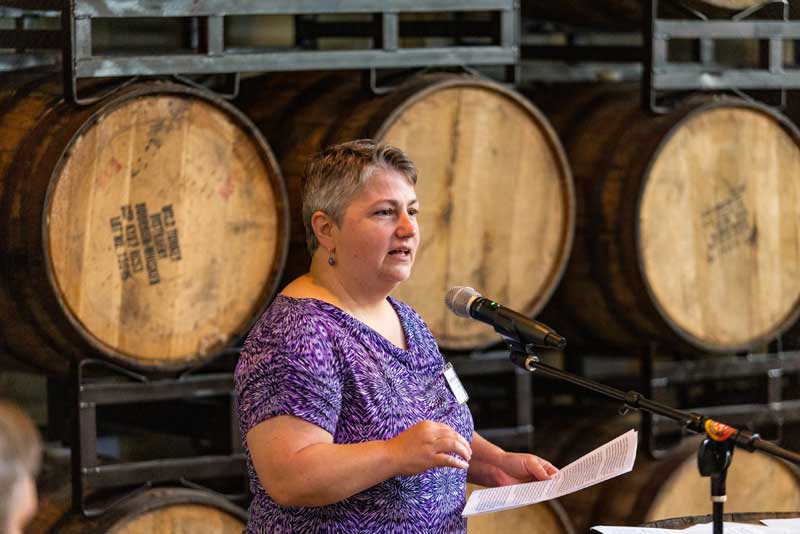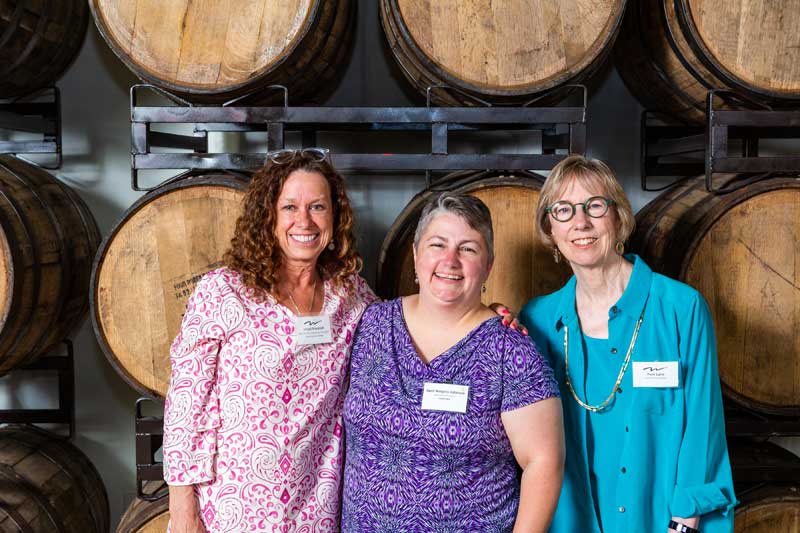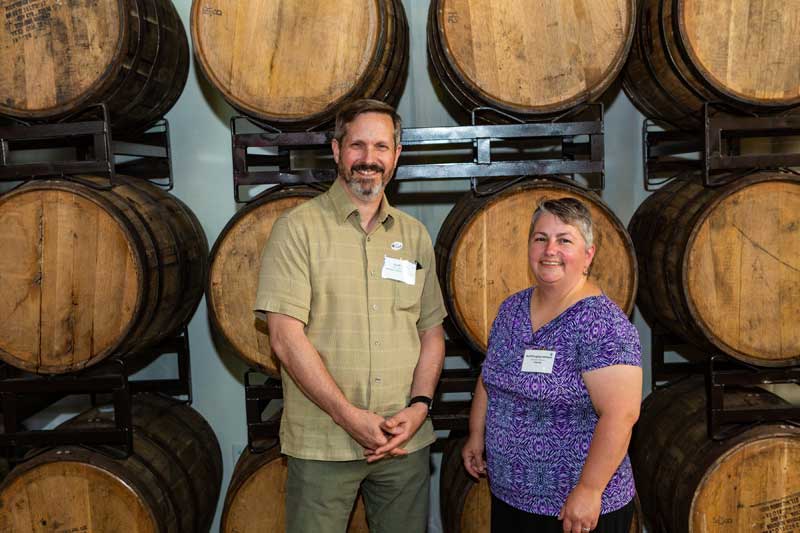Partners in Prevention
Our thanks to the Women for Women Giving Circle for investing in these prevention efforts in our community. Here is a summary of this project as presented by Helpmate’s Executive Director April Burgess-Johnson on May 23, 2022.
Prevention is Powerful
Prevention is powerful. At its core, prevention is social change work. The Buncombe County Partners in Prevention came together with an audacious goal: to end domestic violence, sexual assault and child maltreatment in our community. This is work that will span generations and, when successful, will transform our society. In 2015, Helpmate, Our VOICE, the Mountain Child Advocacy Center and Pisgah Legal Services came together with a task force made up of a broad spectrum of community residents and began the hard work to create a plan to help us realize this audacious goal. In 2017, we produced the Pathways to Prevention plan. In the opening paragraphs of this Plan, we articulated our vision:
It is our shared and common goal to have a community free from abuse. To end abuse and eliminate the need for survivor services, we must focus on how to prevent people from engaging in abusive behaviors. Prevention of perpetration is a complex and challenging problem to address. However, we know that children who are abused learn unhealthy behaviors and develop maladaptive coping skills, which can show up later in their adolescent and adult relationships as intimate partner and/or sexual violence. We also know that what a child abuse victim needs varies substantially from what a sexual violence or domestic violence survivor needs, but that effective tactics to prevent perpetration of these forms of abuse overlap significantly. To address these complex issues, we have crafted a long-term Plan aimed at preventing perpetration of domestic violence, sexual assault and child abuse. This Plan uses proven public health strategies to promote healthy relationships where people live, learn, work, play, and worship. We believe that this multi-faceted approach gives our community the best possible chance of developing families and relationships that are safe and based on equality.
We are immensely grateful that the Women for Women Giving Circle saw fit to invest in implementing this Plan, and I’m happy to share our progress with you tonight.
First, the process itself was a success. Instead of working in silos, we combined efforts, communicated and collaborated to make sure that each organization’s work moved the Plan goals forward and that we were making the best use of our resources. Our work relied upon a firm foundation of trust, respect and shared purpose. We were intentional about equity and inclusion, welcoming a diverse blend of voices from across our community. Our process worked because we kept people engaged and active, offering meaningful opportunities for work and input. We had the richest dialogue when we disagreed; these moments gave us the chance to step back and make sure that we were really and truly listening to one another. We cast a broad net, advertising on City buses, social media, traditional media and even launched our own website, bcviolenceprevention.org.
We wanted to measure the impact of our efforts in a lasting way. Acknowledging that this is generational work, we took on the monumental task of creating a tool to measure the attitudes, beliefs and behaviors of members of our community about violence. So, the Partners worked with UNCA and the NC Center for Health and Wellness to custom design an Attitudes Towards Violence assessment tool. We believe this to be the most accessible and effective tool of its kind in existence and are publishing papers about its process and outcomes so other communities can replicate our work. Since its first administration, we have collected responses from 2339 Buncombe County residents in both English and Spanish. We have learned how beliefs vary by demographic categories and zip codes in our community, which gives us the tools to tailor outreach strategies.
We learned that a bit over half of our community knew where to go for help, illuminating the need to continue to advertise available victim services.
We reached nearly 53,000 people with violence prevention education. This work took place in schools, faith communities, businesses, healthcare settings, and among community groups all across our community. We put flyers in food boxes, designed billboards, did a ton of social media work and used every available opportunity to help people find resources and to learn about how to form healthy relationships, resolve conflicts peacefully and to respect boundaries.
We also worked for change on a policy level, even in the midst of a difficult political climate and during a global pandemic. We published white papers dealing with access to domestic violence protective orders, funding for victim services, mandatory education about child sexual abuse, increased enforcement of Title IX and we created a Buncombe County Domestic Violence Fatality Review Team.
We know that change is possible. We know that we can prevent violence. We owe it to future generations to continue our investment in this important work. On behalf of the Partners in Prevention, we thank you for your confidence and for your investment in helping launch these important initiatives.



